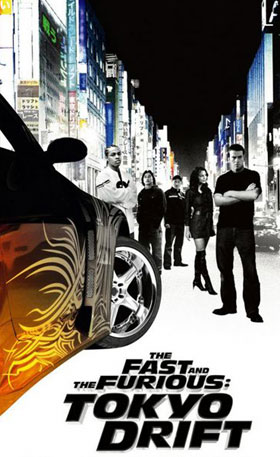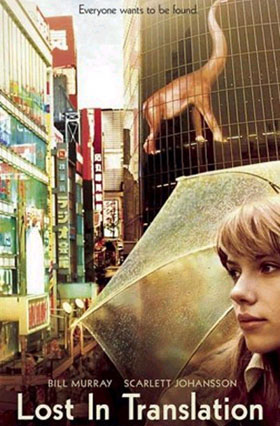Japanese Film Commissions Go to Pusan
The Film Series > Shochiku Animation > Film Funding > Toei Animation > Film Commission > Tokyo Fest 2006
A sense of adventure, the Captain says, is the most important thing to bring inside a movie theater. But a topped-up flask is a close second.
 This week he is going on location. Join him as he finds out just what Japanese municipalities are doing to get film productions shot within their city limits.
This week he is going on location. Join him as he finds out just what Japanese municipalities are doing to get film productions shot within their city limits.
Filmgoers to this year's "The Fast and the Furious: Tokyo Drift" probably can recall its remarkable car-chase scenes and equally unremarkable plot.
But Tetsuji Maezawa, planning committee chairman of the Japan Film Commission Promotion Council (JFCPC), remembers something else: most of the footage was shot off of Tokyo's streets.
"If filmmakers can't film in Tokyo," he says of the prohibitive regulations in place in Japan's most recognizable city, "I think that there is a considerable problem."
The JFCPC was established 5 years ago with the goal of supporting regional film commissions (FCs) so as to enhance opportunities for shooting films, television programs, and commercials in Japan.
Recent years have seen the number of FCs explode, as shown by the stampede of delegations set to attend this year's Pusan International Film Festival. But Maezawa has a vision that emphasizes quality, not quantity.
A typical FC is a non-profit entity that will offer consulting services for receiving background information on locations, procuring extras, and obtaining permission to shoot in certain areas - all free of charge.
When the JFCPC started there were only 14 FCs in Japan. Now there are over 90, stretching from the northern island of Hokkaido all the way south to Okinawa.
With few exceptions, these FCs are modest operations staffed by government workers. Specialists within the film industry are generally not on the rolls.
The obstacles to filming in urban centers like Tokyo involve police regulations prohibiting shoots in heavily trafficked and landmark areas - the locations often most sought after by directors.
"After 'Lost in Translation,'" says Maezawa of the 2003 film that featured two foreigners drifting through the complexities of Tokyo's concrete sprawl, "I had great hopes for increasing the number of shoots in Japan by American movie companies. However, filming such things as car-chase scenes is difficult. For 'Tokyo Drift,' the Tokyo police turned a cold shoulder to shooting in the streets."
 It is perhaps not so surprising then to learn that the majority of the street shots in "Lost in Translation," which subsequently boosted the city's international image, were filmed largely on-the-run with a handheld camera and without official permission from the relevant authorities.
It is perhaps not so surprising then to learn that the majority of the street shots in "Lost in Translation," which subsequently boosted the city's international image, were filmed largely on-the-run with a handheld camera and without official permission from the relevant authorities.
Maezawa notes that things have improved slightly. Earlier this year the government and the National Police Agency of Tokyo came to an agreement that will allow limited access to Tokyo's streets by filmmakers.
As well, FC Tokyo Location Box played a key role in gaining access for director Clint Eastwood to shoot on the former World War II battleground of Iwo Jima, for which access has mainly been limited to annual memorial services, for the upcoming film "Flags of Our Fathers," the story of the six men captured on film raising the Stars and Stripes following that pivotal battle, and "Red Sun, Black Sand," a Japanese perspective (in Japanese) of that very same conflict.
The most receptive regions have primarily been those in the countryside. South Korea, in taking advantage of a recent reciprocal interest in pop culture with Japan, has been a key player.
The 2005 South Korean film "Blue Swallow," the true story of one of Korea's first female airplane pilots, was shot with the coastal town of Atami, Shizuoka Prefecture as the backdrop.
To further foster this working relationship, Japan will send more than a dozen FCs to the Pusan International Film Festival, notably the Tokyo Location Box and the Kobe Film Office.
"There are so many appealing locations in Tokyo in which filming is possible," says Mayumi Furuya, a supervisor at the Tokyo Location Box. "We need to promote that we can offer assistance in finding the right locations and filming coordinators."
Maezawa doesn't see the sudden increase in FCs in Japan as necessarily positive. He says thus far it has been simply a case of one municipality looking at its neighbor in envy, with the effect snowballing.
For the future, he believes reorganizing the FCs into one unit covering a large area and staffing them with film-business professionals would make them more effective.
"I think Japanese FCs," Maezawa says, "must provide more substantial functions, such as international promotion and management. Right now they are too small and weak."
The Film Series > Shochiku Animation > Film Funding > Toei Animation > Film Commission > Tokyo Fest 2006

